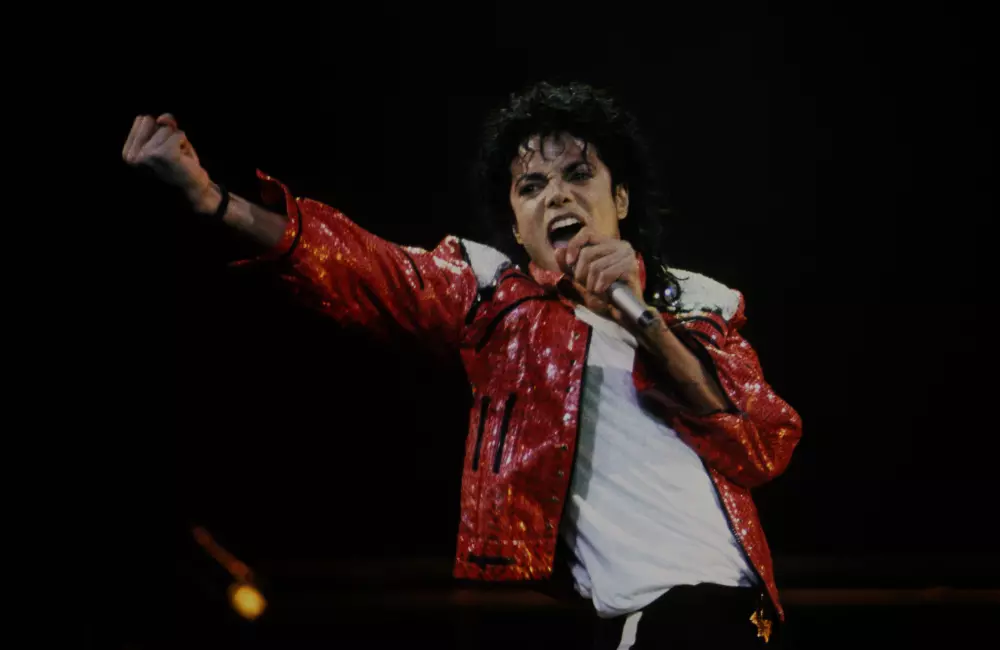There are names that need no introduction. Frank Sinatra is one of them. He was not just a singer, but an entire era — a man whose songs still play in movies, at parties, in cafes, and in the hearts of millions.
Frank Sinatra is a voice recognized from the very first notes. He is the image of a man in a perfectly tailored suit, holding a glass of whiskey and a cigar in his hand. He was the magic of the stage, the ability to captivate an audience with a single glance and make every line sound like a personal confession. He was more than a musician. He was a lifestyle. A symbol of New York, Las Vegas, and an entire generation that believed in dreams and followed them to the rhythm of music.
He was born in Hoboken, New Jersey, and became the voice of America. But the road to fame was not easy: a tough childhood, health struggles, falls, and triumphs. Sinatra’s story is one of talent, perseverance, and charisma.
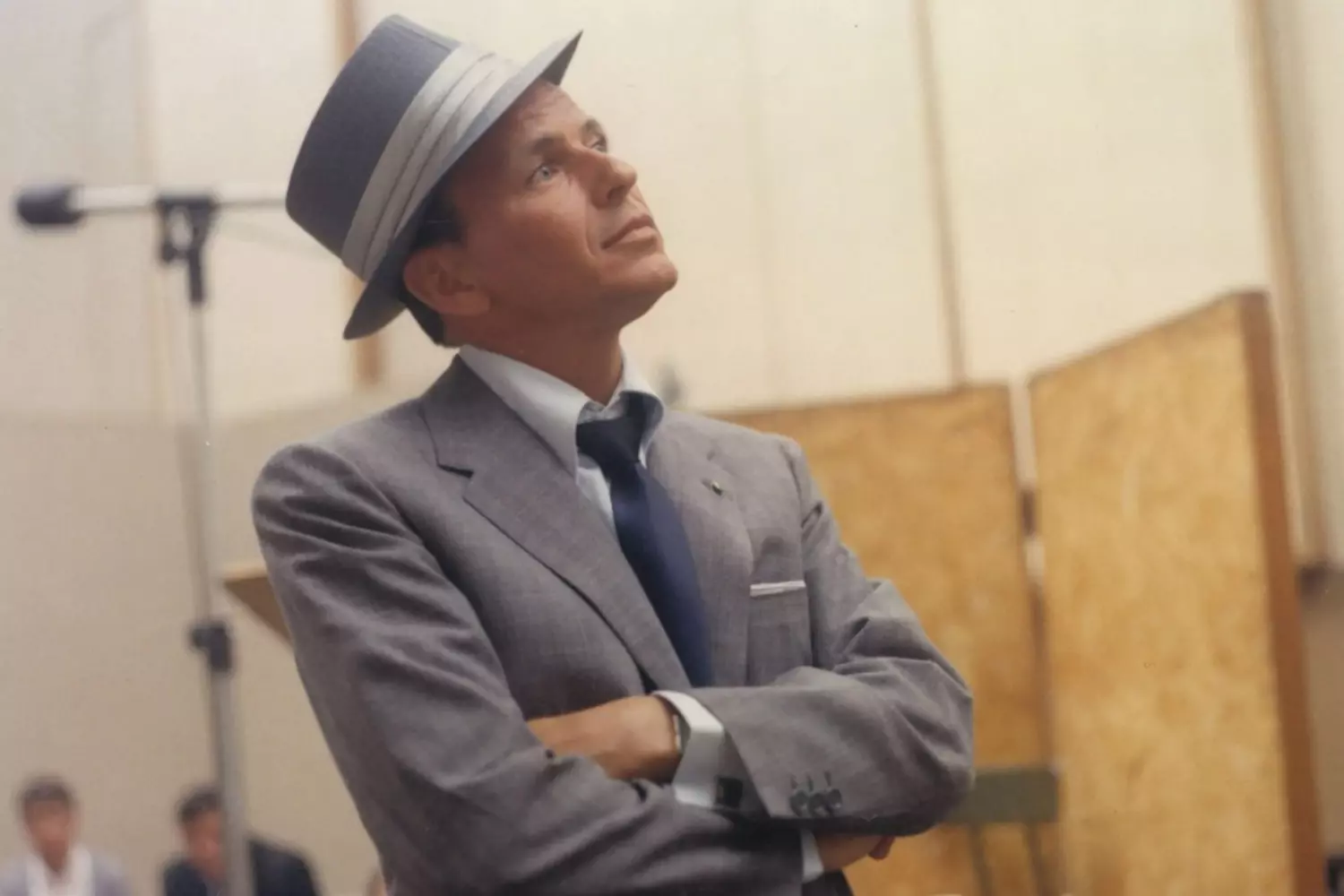
"Sinatra is the only one who can sing the phone book and make you cry." — Ella Fitzgerald
Childhood and Youth: A Fragile Boy with a Big Dream
On December 12, 1915, in the small industrial town of Hoboken, New Jersey, a boy was born who was destined to become the "Voice of America." His name was Francis Albert Sinatra.
But the birth of this voice was a miracle.
Sinatra came into the world with such difficulty that doctors didn’t believe he would survive. His mother, Natalie "Dolly" Sinatra, lost a lot of blood, and the newborn baby was born with a damaged eardrum. He was thought to be dead — his bluish, lifeless body was laid on the kitchen table while the midwife tended to his mother. But after a couple of minutes, the baby let out a cry. That first cry saved him — and, as fans would later say, foreshadowed an entire musical era.
Sinatra’s mother was a woman people said, "If there are ten people in the room, she will definitely be the eleventh." Energetic, businesslike, stubborn — she became not only his support but also Frank’s first producer.
- Emigrated with her family from Sicily.
- Worked as a midwife and later as a political activist.
- Supported her son in everything but didn’t spoil him: she demanded discipline.
Interesting fact: Dolly helped women with abortions, which was illegal in the 1920s. This sparked rumors but also showed her independence and strength.
Frank was the only child in the family. This left its mark — he often felt lonely. Quiet, observant, prone to daydreaming. But when the music played, everything changed.
- He endlessly listened to records by Bing Crosby, who became his musical idol.
- He saw music not as entertainment but as a portal — to a world where he could be anyone.
- He began to imitate Crosby’s style, copying his intonations, pauses, and soft delivery.
Old neighbors remembered that young Frank could sit for hours by the radio with his eyes closed, quietly singing along while the street lived its own life outside the window.
Frank’s studies went poorly. Not because he was lazy, but because he saw no point. The world outside was gray, but the music was bright.
- He dropped out of school at 15, which was almost taboo in those days.
- He tried working as a messenger, driver, even a journalist for a local newspaper.
- All of it seemed temporary — he wanted to be on stage.
The turning point came in 1935, when Sinatra joined the group The Hoboken Four, with whom he won the radio show Major Bowes Amateur Hour. This show was a predecessor of modern talent shows, and millions listened to it every week.
Interesting fact: The group initially performed under the pseudonym "The Three Flashes," but when Frank joined, the host simply announced them as "The Hoboken Four," and the name stuck.
With the group, he began touring the country. Sometimes he slept on buses, sometimes on the kitchen couches of fans. But on stage, he felt at home.
- He mastered stage presence and the ability to hold an audience.
- He began developing his recognizable vocal style: smooth, lyrical, without unnecessary strain.
- He realized that the audience was his element.
Sinatra said that the microphone was like a cigarette: once you try it, you never let go. He mastered the art of singing into a microphone like no one before him. He sang softly yet emotionally — the microphone allowed intimacy. He studied how the voice behaved at different volumes and distances. He used breathing as part of the musical phrasing — the inhale was not just a pause but an emotion.
Frank’s youth was not about shining success or laurels. It was a story of how a fragile, insecure boy became an artist who changed the industry. A painful childhood taught him to value the power of the voice. Loneliness made him sensitive to emotions — and he learned to convey them through music. His intolerance of limits pushed him to forge his own path — outside the standards.
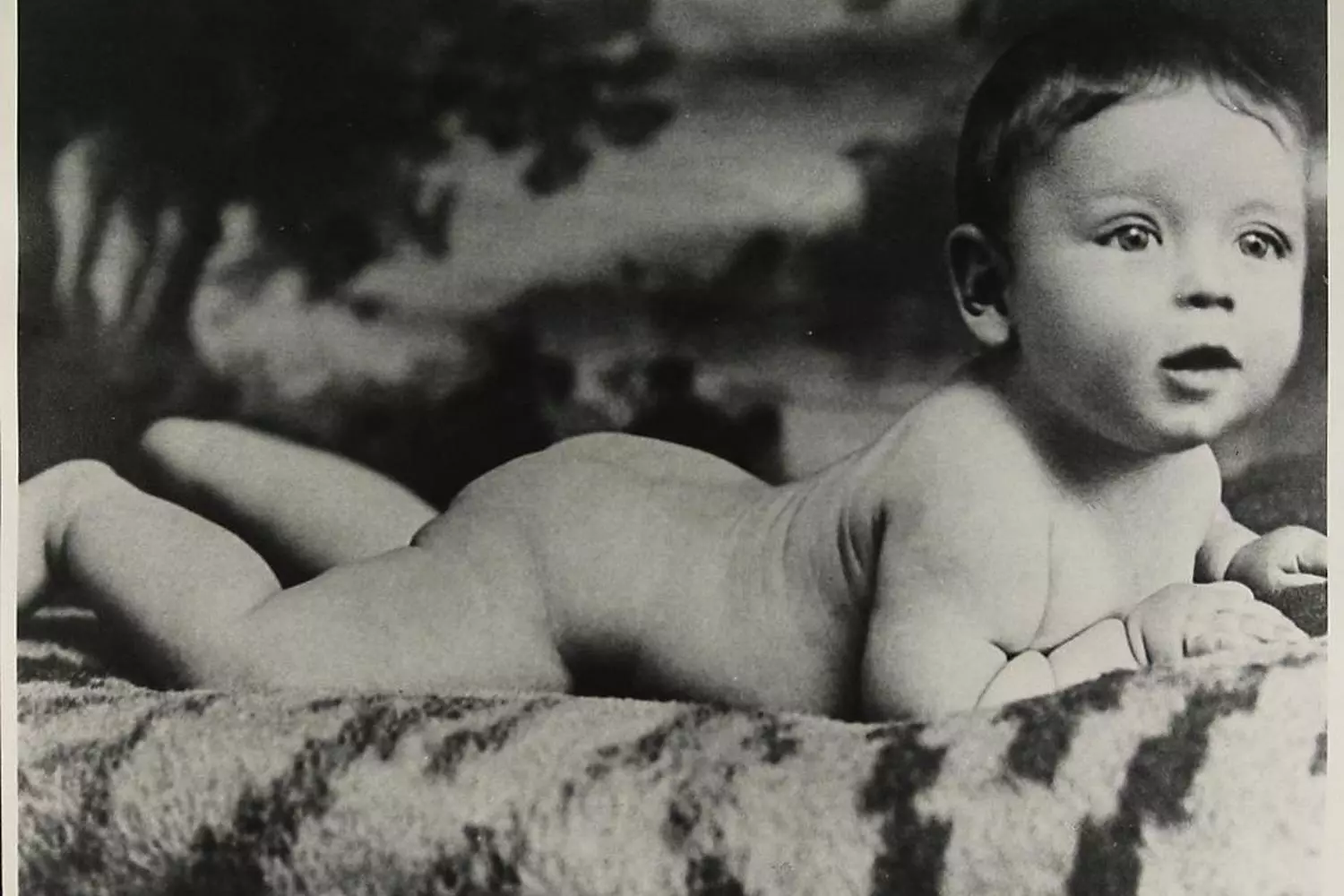
Breakthrough in the Swing Era: The Journey from Shadows to the Spotlight
The late 1930s and early 1940s were a time when America lived to the rhythm of swing. Jazz orchestras filled the radio airwaves, dance halls crackled with energy, and microphones buzzed with passion. It was then that Frank Sinatra stopped being just a young guy with a good voice. He became a symbol of a generation.
But before that — a path through orchestras, doubts, and risks.
In 1939, the young Sinatra got his first big break — vocalist in the big band of Harry James, a trumpeter and rising star of swing. It was with him that Frank recorded his first commercial track — “From the Bottom of My Heart.”
- They recorded only 8 songs, but that was enough for Sinatra’s voice to be noticed.
- Harry James was the first to see in him not just a singer, but a potential icon.
- Salary? 75 dollars a week. Back then — almost nothing. But for young Frank — a whole world.
Quote from Harry James: “He doesn’t just have a voice. He has a story in his voice.”
But James had a small orchestra, while Tomi Dorsey had a true musical ship of the era. Soon Sinatra changed course. In that same year, 1939, Sinatra joined the Tomi Dorsey orchestra — one of the most famous jazz machines of its time. It was during this period that his talent fully blossomed.
- Worked as a soloist and recorded hits like “I'll Never Smile Again” — a song that reached No. 1 on the Billboard charts and stayed there for 12 weeks.
- Honed his breathing technique: Dorsey, a renowned master of long trombone phrases, taught Frank to control his breath to the microsecond.
- Learned from Dorsey how to manage emotions — to sing not louder, but deeper.
Interesting fact: Frank trained himself to hold his breath underwater to sing long phrases without pauses. This became his “signature.”
In 1942, Sinatra made a bold move for the time: he left the orchestra and began a solo career. At a time when big bands were the foundation of the industry, this decision seemed like a gamble.
- He signed a contract with Columbia Records, then not yet the largest record company.
- His first singles — “Night and Day,” “In the Blue of Evening” — quickly soared.
- And then the unexpected happened: his concerts started attracting teenagers — especially girls.
Sinatramania: America Goes Crazy
Thousands of screaming fans fainting at his appearance — this wasn’t an invention of the 1960s and The Beatles. It all started with Frank.
- In 1943, at a concert at the Paramount Theatre, the crowd literally tore the doors off.
- Girls wore pendants with his name, wrote letters marked “you are my everything,” and some even tattooed “Frankie” on their wrists.
- Newspapers wrote: “He has no dances, no guitars — only a voice. And that is enough to shake the world.”
Why? Because Sinatra didn’t just sing — he lived every line. His voice carried something sad, beautiful, human — and people fell in love with it. He didn’t play a hero — he was vulnerable, real. He was the first singer for whom the microphone was not an amplifier, but an instrument of intimacy.
While soldiers fought overseas, at home Sinatra became the voice of hope. His records played on the radio, his face was printed on posters, his voice was written on letters.
- Performed at charity events, sold war bonds.
- His song “I'll Be Seeing You” became the unofficial anthem of wartime farewells.
- Earned the nickname "The Voice,” and later the ironic "Chairman of the Board,” emphasizing his influence.
Interesting fact: In 1945, a poll among American soldiers showed Frank Sinatra as the second most popular person after President Roosevelt.
This period marks the rise not just of a star, but of a cultural phenomenon. Sinatra didn’t just sing — he changed the rules of the game. The singer became more important than the orchestra. Vocal performance became an emotional art. The stage became a space for confession, not just a show.
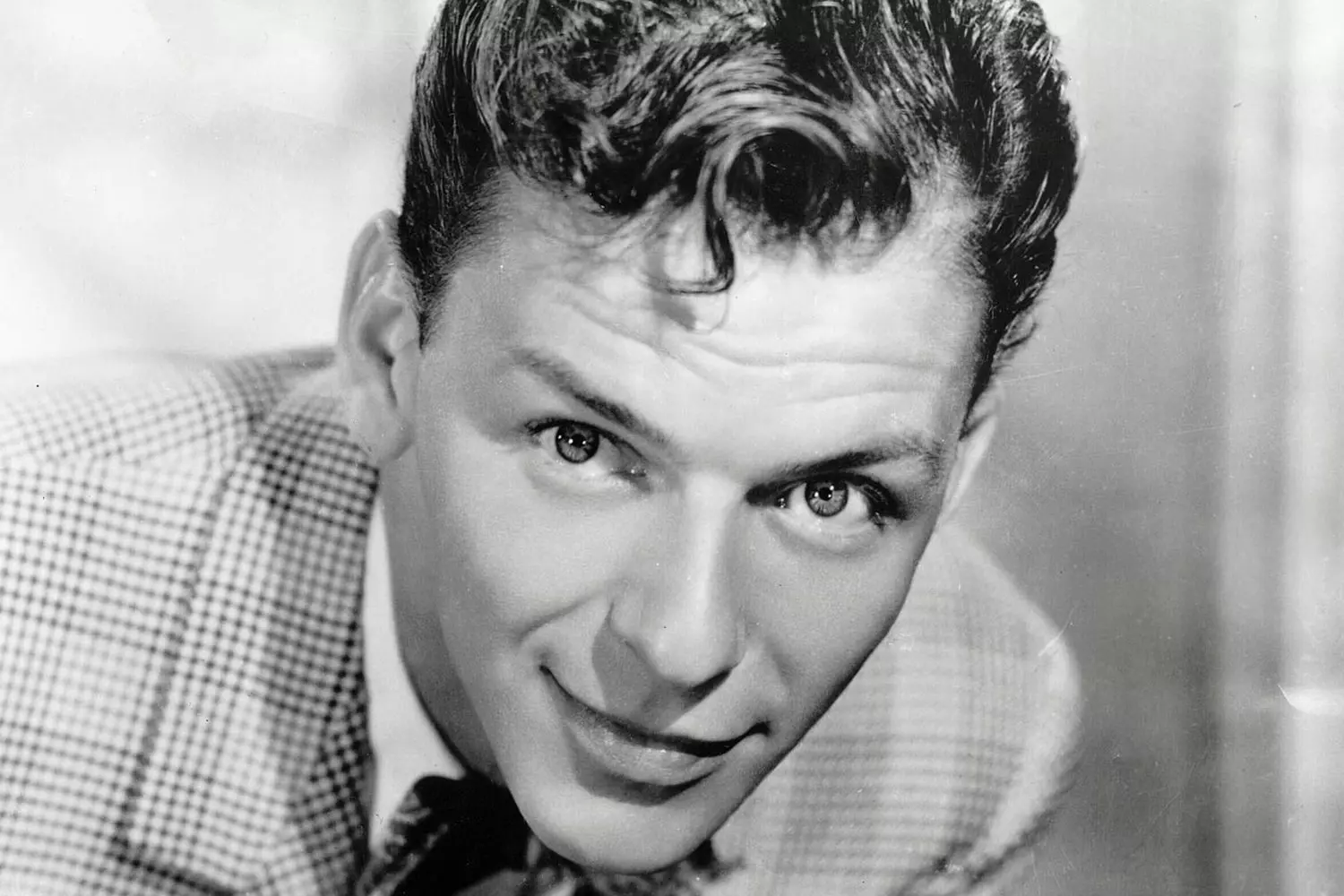
The Crisis of the ’50s: Fall and Rebirth
Fame, like the sea, knows no rest. One day — you’re the king of the stage, the idol of millions, the “Voice of a Nation.” The next — your records gather dust on the shelf, film studios don’t answer your calls, and your voice trembles, betraying you on the high notes. This was the abyss Frank Sinatra found himself in by the early 1950s.
The public was tired. War veterans were returning home, and the country craved new heroes. The youth had fallen for rock ’n’ roll, and swing suddenly seemed “old man’s music.” Sinatra was out of the game — and it felt painfully obvious.
- The voice, honed by a decade of performing, began to fail. On tour, Frank lost his phrasing, cracked, hit wrong notes.
- The contract with Columbia Records was not renewed. Sales declined, hits stopped coming.
- The divorce from Nancy Barbato, mother of his three children, and a turbulent romance with Ava Gardner — fodder for tabloids, but not for public sympathy.
- Some critics literally wrote his obituary: “Sinatra was good in the ’40s. Now he’s just a shadow.”
Quote from Variety magazine, 1951: “The public is tired of tears in the voice. It’s time to dance, not to cry.”
The Turning Point: An Oscar at an Unexpected Moment
But every fall has a point to push off from. For Sinatra, it was 1953 and the film “From Here to Eternity.”
- Sinatra fought desperately for the supporting role of Private Maggio. Rumor has it that Ava Gardner herself intervened on his behalf.
- The role wasn’t vocal but dramatically powerful. And he gave it his all.
- The result — an Oscar for Best Supporting Actor.
Sinatra’s quote: “I didn’t just get an Oscar. I got my life back.”
This moment became a point of reboot.
Inspired by a new wave, Sinatra signed a contract with Capitol Records in 1953 — a label that was just shaping its image then. Betting on Sinatra seemed risky but turned into gold. He began collaborating with arranger Nelson Riddle — a creative duo that produced true masterpieces. The sound grew deeper, more cinematic, more mature. This was no longer a boy with a microphone — this was a man with a past.
Legendary Capitol Records Albums
- 01. "In the Wee Small Hours" (1955)
A dark, intimate album recorded after his breakup with Ava Gardner. Many call it the first concept album in pop music history.
- Themes: loneliness, loss, reflection
- Cover: Sinatra under a streetlamp, in a blue suit — an iconic image
- 02. "Songs for Swingin’ Lovers!" (1956)
A mood-contrasting album — light, romantic, playful. Here — Sinatra the seducer.
- Hit: "I've Got You Under My Skin"
- Included in lists of the greatest albums of all time
- 03. "Only the Lonely" (1958)
Deep, bitter, full of tragedy — but musically flawless. Reflects his personal depression, but through art.
Reprise Records: Freedom in Everything
In 1960, at the peak of his second wave of popularity, Sinatra took a step ahead of his time — he founded his own label: Reprise Records.
- His manifesto: “I want to control my art. Write what I want. Sing how I want. With whom I want.”
- Reprise became a platform for uncompromising creativity.
- He invited friends and colleagues: Dean Martin, Sammy Davis Jr., Ella Fitzgerald.
Interesting fact: Later, Reprise released Neil Young, Joni Mitchell, and The Beach Boys — Sinatra inadvertently became a producer of future eras.
In the ’50s and early ’60s, Sinatra ceased to be just a singer. He became style, a symbol, an archetype. His look — a sharp suit, hat, cigarette — became the standard of male elegance. He socialized with presidents, befriended John Kennedy, sang at inaugurations. He crafted the image of a man who had been through everything but remained unbroken.
- His first fame came from youth, voice, and dreams.
- The second — from pain, experience, and inner strength.
- He became the voice not of teenagers, but of grown men and women who knew what it means to lose and start over.
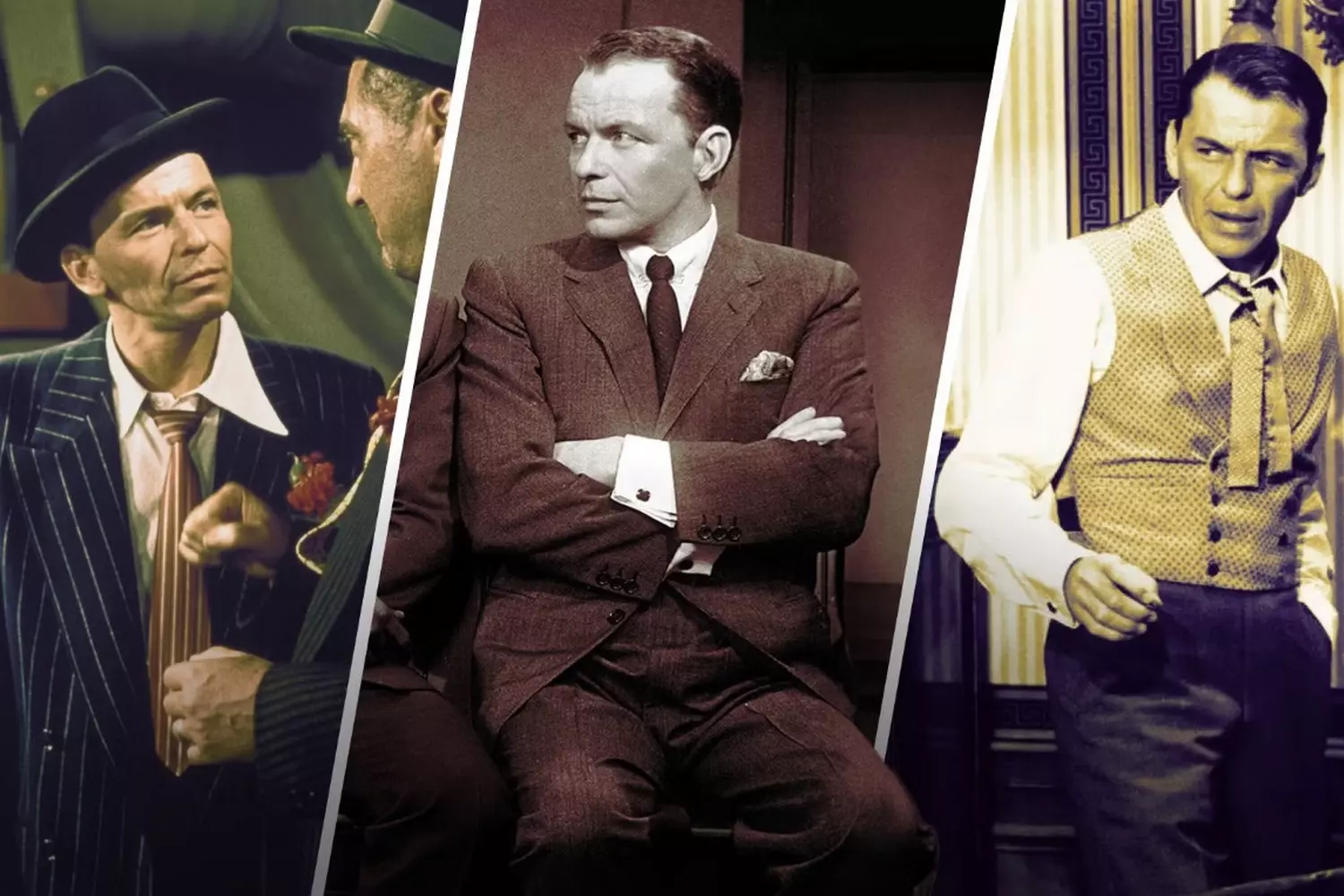
Sinatra and the Rat Pack: Style, Humor, and Elegance
In the early 1960s, America was undergoing a cultural revolution. The youth were choosing rock ’n’ roll, Hemingway was no longer the main hero, and The Beatles were just about to storm the charts. But there was one man who still held the crowd in the palm of his hand. He didn’t just sing. He ruled. And his name was Frank Sinatra.
It was then, at the peak of his influence, that he gathered around himself the most stylish, daring, and charismatic company in show business history — the Rat Pack.
Rat Pack was an unofficial brotherhood of entertainers, comedians, and singers whose shows in Las Vegas became legendary, and whose style became iconic. They didn’t just entertain the audience — they set the trends, rhythms, and tone of an entire era. The core members were:
- Frank Sinatra — charisma, power, and magnetic center. He set the tone, led the way, and created the aura.
- Dean Martin — velvet voice, ironic laziness, always with a drink in hand.
- Sammy Davis Jr. — showman, dancer, singer, and fighter against racism.
- Peter Lawford — British charm, the link to the Kennedy family.
- Joey Bishop — king of improvisation, humorist, and the soul of the group.
Interesting fact: The term "Rat Pack" was originally used back in the ’50s when Lauren Bacall called a group of Humphrey Bogart’s friends by that name. But it was Sinatra who turned the name into a brand.
Their home was the Sands hotel-casino in Las Vegas. It was there — on the stage of the Copa Room — that the magic of the Rat Pack was born:
- Shows started late — sometimes close to midnight.
- Every night turned into an improvised performance, with no rehearsals and the script written on the fly.
- They would interrupt each other, joke, sing duets, argue, spill whiskey, sing again — all looking like a friendly night out at a bar but in front of thousands of spectators.
They didn’t limit themselves to the stage. Rat Pack was also about movies full of drive, glamour, and self-irony. The main films:
- 01. "Ocean’s 11" (1960)
- A glamorous casino heist with humor and music.
- Each member played himself — essentially, it was a film about themselves.
- The 2001 remake with Clooney and Pitt is a direct tribute to the original.
- 02. "Robin and the 7 Hoods" (1964)
- A musical where Sinatra becomes a gangster with a heart.
- Funny, daring, full of stylish numbers.
- 03. "Sergeants 3" (1962)
- A Western with an ironic twist.
- More than a movie, it was a way to get everyone together on screen again.
The Rat Pack became the prototype of the modern pop-culture brotherhood: from boy bands to stand-up comedy teams. Their style — classic tuxedos, cigars, velvet voices — lives on to this day. They set the image of “cool”, later adopted by James Bond, Mad Men, and thousands of artists. They showed that humor, style, and male friendship could be the foundation of a great show.
Behind the scenes — there was alcohol, pressure, and political connections (including rumors of mafia ties). Especially loud was the talk about Sinatra’s friendship with John Kennedy and his brother Robert. Rat Pack became a symbol of pre-Beatles America, the era of glossy magazines, clubs, and Marilyn Monroe. After Kennedy’s assassination and the rise of the hippies — it all looked like a fading era, a style belonging to the Golden Age.
Today, the image of the Rat Pack is vintage romance, a glossy era when evenings started with martinis, continued with jokes and songs, and ended with the morning light on the neon of Vegas. Their music is still used in movies, ads, and hotels. Their style is copied by fashionable brands. Their spirit lives on in everyone who wants to be free, stylish, and just a little bit cheeky.
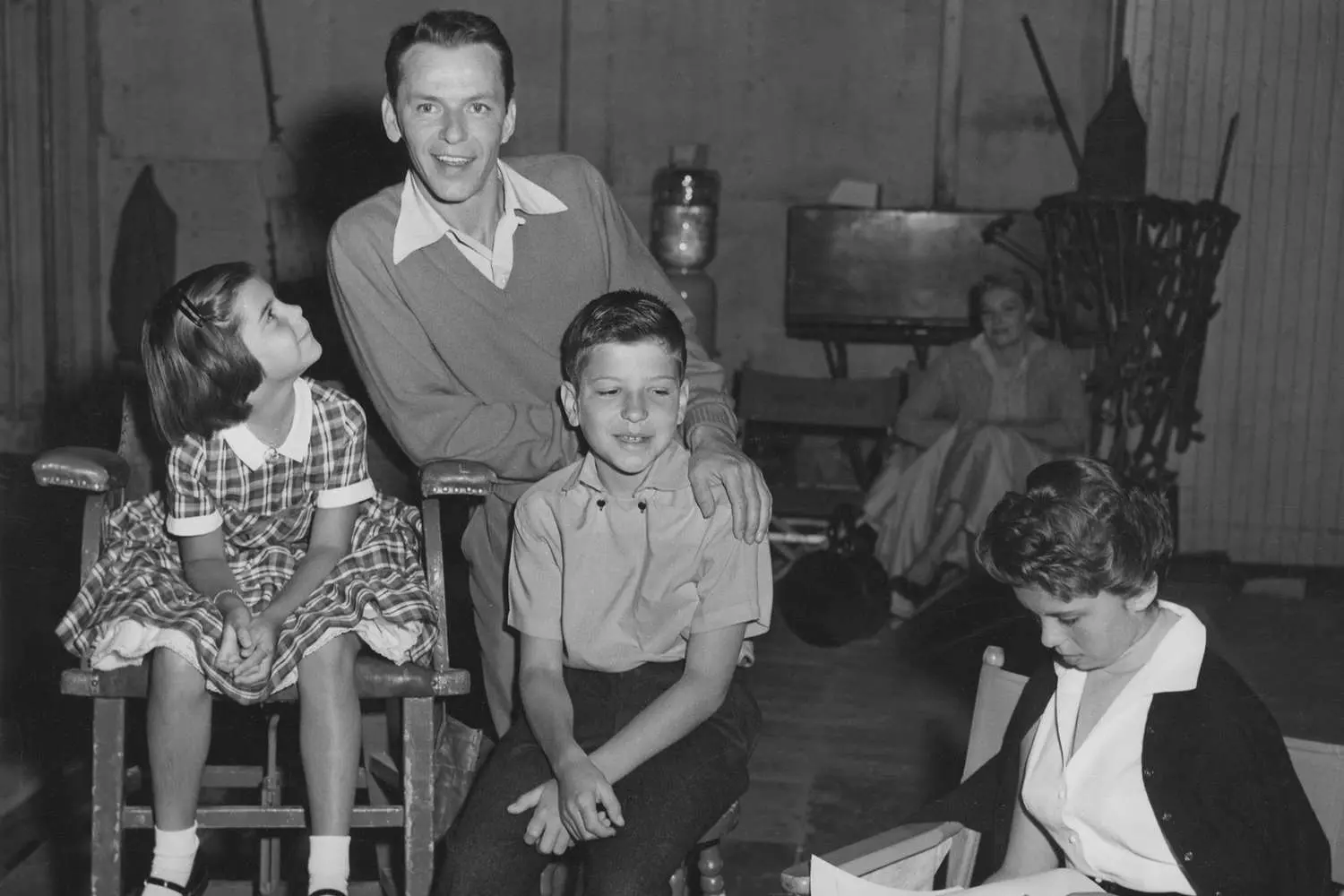
Politics, Mafia, and Rumors
Frank Sinatra was always a figure of controversy. He was respected, adored, quoted, but also... suspected. Suspected of what? Of mafia ties, backstage political games, of being not just the voice of an era but its whisper in the shadows.
Rumors of mafia connections followed Sinatra for most of his life. Where there’s smoke, is there fire? Or was it simply that the charm and timbre of his voice perfectly matched the legend?
The most notable points of contact
- 01. Sam Giancana — head of the Chicago mafia
- According to the FBI and several biographers, Sinatra dined and met repeatedly with Giancana.
- It was rumored that they were not just acquaintances — but friends.
- 02. John Kennedy and the Italian connection
- Before the 1960 election, Sinatra actively supported Kennedy, fundraising and speaking at rallies.
- One theory suggests that the mafia influenced voting in certain states through Sinatra, securing John’s victory.
- After the election, Kennedy distanced himself from Frank — allegedly due to pressure from the CIA and Robert Kennedy, who were concerned about his circle.
- 03. The FBI kept a file on him over 1,300 pages long
- The agency monitored his meetings, calls, and movements.
- Documents later declassified confirm their interest but contain no direct evidence of his involvement in criminal activity.
Sinatra always said the rumors were nonsense. In interviews, he reacted sharply to questions about the mafia, cutting off journalists:
“If I knew someone who later turned out to be not who they seemed — that doesn’t make me a criminal.”
At the same time, his image as the “bad boy with the soul of a poet” only grew stronger. He smoked, drank whiskey, wore perfectly tailored suits, and if anyone whispered, “He’s connected to the mafia” — the public just nodded admiringly: “He’s supposed to be like that!”
He was the only entertainer of his time who simultaneously befriended senators and dined with figures from the criminal underworld. He was invited to the White House and private parties secretly wiretapped by the FBI. He lived on the edge: between the spotlight and the shadows of those unseen on television.
Sinatra’s films often reflected themes of crime, honor, loyalty, and dangerous ties. He himself said in interviews:
“I’m an artist. Everything else is for those who have the time to deal with it.”
His charm lay in the fact that no one knew exactly where Frank the man ended and Frank the legend began. So what was the outcome?
- No direct evidence of his mafia ties was ever presented.
- But neither was his complete innocence confirmed.
- He remained a myth that cannot be dispelled — and maybe that is his true power.
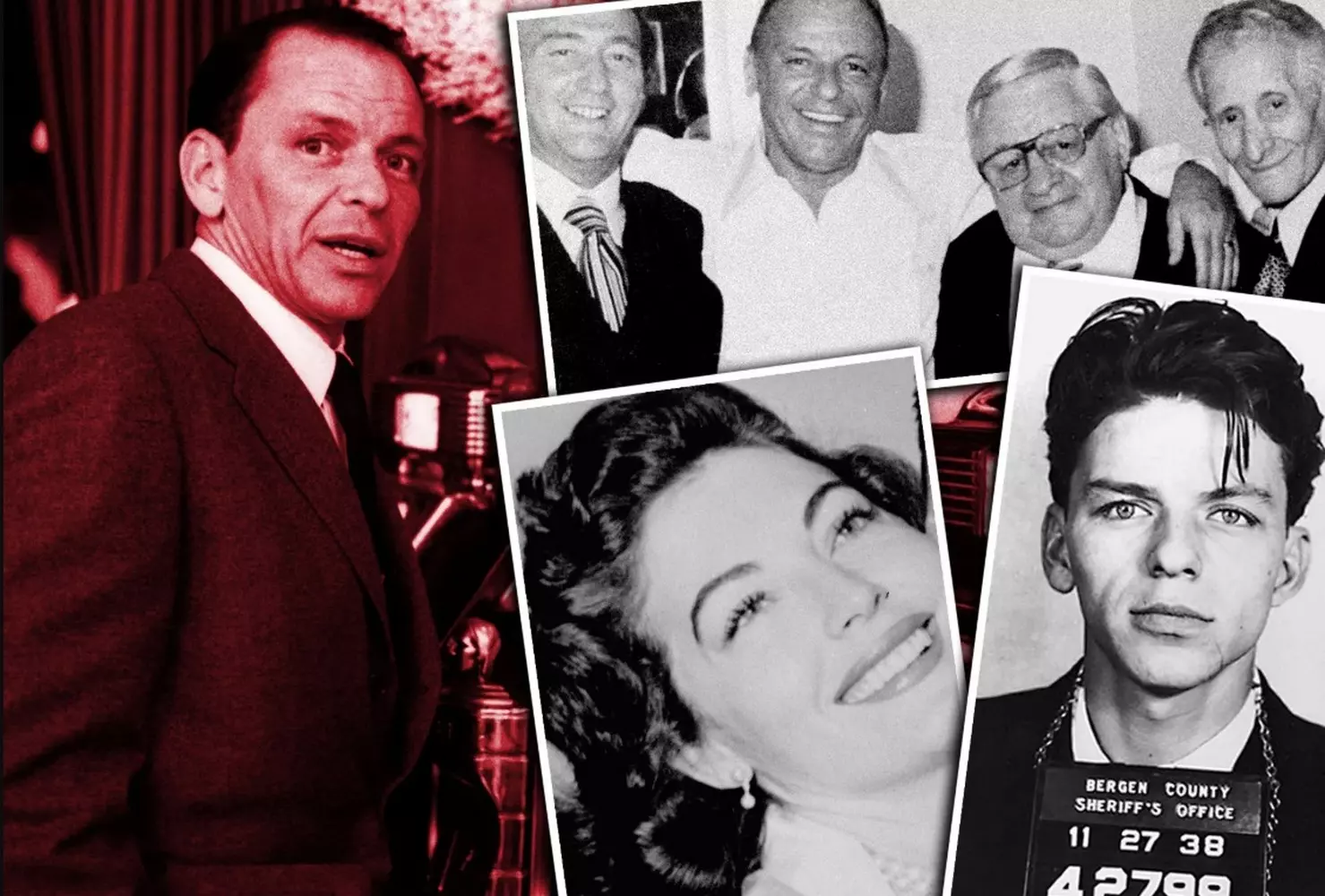
Personal Life: Women, Passion, Tragedies
Frank Sinatra is a legend of music and cinema, but his personal life was no less dramatic and intense than his stage performances. Behind the glitter of fame hid turbulent romances, deep emotions, unexpected betrayals, and tragic moments. At the center of this story were the women who were both his muses and trials of fate.
Four marriages — four different worlds
- 01. Nancy Barbato (from 1939 to 1951) — his first and most long-awaited love.
- She was a “down-to-earth” woman to whom Frank remained loyal even after their separation.
- Together they raised three children: Nancy, Frank Jr., and Tina.
- Their relationship had both happy moments and difficult trials, as Sinatra’s career soared while his personal life fell apart.
- 02. Ava Gardner (from 1951 to 1957) — a femme fatale and a true Hollywood star.
- Their love was passionate and stormy, far from calm.
- Ava possessed not only beauty but also a strong character — they often argued, and jealousy plus press intrigues only heightened the tension.
- Despite their divorce, their relationship forever remained one of the brightest chapters in Sinatra’s life.
- 03. Mia Farrow (from 1966 to 1968) — a young and talented actress, significantly younger than Sinatra.
- Their marriage was an attempt to start anew, but the age gap and differing views quickly showed themselves.
- Despite the separation, Frank and Mia maintained warm relations.
- 04. Barbara Marx (from 1976 until Sinatra’s death) — the last and perhaps the calmest love.
- Barbara was a support and pillar; Sinatra lived with her for more than 20 years.
- Their relationship was not flashy but stable, which for Frank—who had gone through many storms—became a rarity and consolation.
Romances that left a mark
- Sinatra was one of the most desired men of his time, and many women dreamed of being close to him.
- His romance with Marilyn Monroe became legendary, although they met rarely and briefly.
- In Sinatra’s circle were other famous actresses and singers from whom he did not hide his passion.
- Despite all his affairs, he always remained a man with deep emotions and often suffered from loneliness.
Despite all the success and love from the public, Sinatra often felt lonely. His first wife Nancy once said:
“Frank could be the most charismatic man in the world, but at home he was often just a tired and vulnerable person.”
Divorces, scandals, misunderstandings — all of these left wounds that neither fame nor money could heal. After the death of his son, Frank went through a severe crisis that affected both his creativity and personal life.
Frank Sinatra’s personal life is the story of a man searching for love and peace but often facing storms. His relationships with women were full of passion and drama, but it was these that made his life real and human, not just a stage persona. Behind the external shine and success lay a heart that did not always find rest.
The great artist’s quiet harbor
Although Sinatra was known as a ladies’ man and a stage legend, deep down he always remained a devoted father and husband. His family was the foundation that supported him even in the most difficult moments of his life.
- 01. Nancy Sinatra
- The eldest daughter, a future singer who inherited her father’s talent and passion for music.
- Her voice and style in the 60s and 70s made her as famous as Sinatra himself.
- Nancy often recalled that despite her father’s busy schedule, he always found time for the family.
- 02. Frank Sinatra Jr.
- The only son, who followed in his father’s footsteps but in a different field — becoming a conductor and actor.
- For him, his father was not only an idol but also a strict teacher.
- Their relationship had ups and downs, but the love remained unchanged.
- 03. Tina Sinatra
- The youngest daughter, who also connected her life with show business.
- She married actor Robert Wagner, and their family became part of Hollywood’s elite.
- Despite the publicity, Tina always kept her father’s memory with warmth and respect.
Contrary to the image of a free-spirited and somewhat rebellious artist, Frank was deeply caring about his family. He understood the value of time spent together and tried to ensure that his children grew up in love and care. After divorcing Nancy, Sinatra maintained friendly relations with her and always supported the children financially and emotionally. His later marriages, especially to Barbara Marx, gave him a chance to feel stability and home comfort, which he so lacked in his youth.
“I can sing on stage to millions, but nothing compares to the pride when my children look at me with love.”
Frank’s life is proof that even the brightest light sometimes needs a quiet place to simply be himself. Family became that island of peace for him, helping him endure not only the highs of fame but also personal hardships.
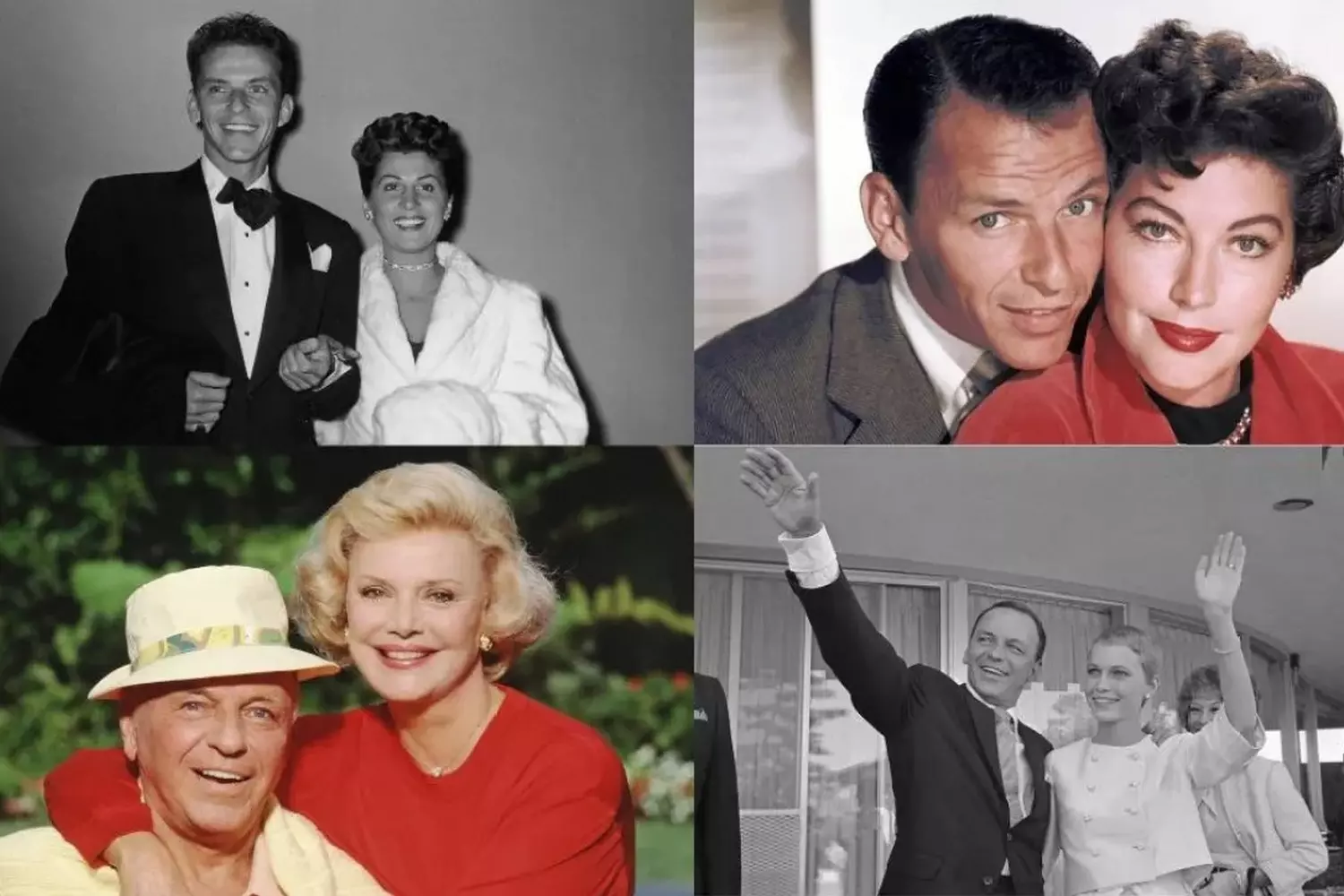
Greatest Timeless Songs
The musical legacy of Frank Sinatra is not just a collection of melodies but a true cultural phenomenon. His songs became soundtracks for different generations, reflecting emotions, style, and the spirit of the times. Each composition is a little story filled with sensuality, charisma, and the unique voice of a great artist.
Top 5 Timeless Songs by Frank Sinatra
- 01. Strangers in the Night
- One of the most romantic and recognizable songs in history.
- Recorded in 1966, it instantly became a hit and earned Sinatra a Grammy award.
- The lyrics about a sudden encounter, when two strangers find love, perfectly match Frank’s soft, enchanting voice.
- 02. Fly Me to the Moon
- A song associated with romance and dreaminess.
- Performed with a sense of lightness and elegance, it became a jazz standard classic.
- Sinatra’s version became one of the most popular and is often played at parties, weddings, and cozy evenings.
- 03. New York, New York
- This anthem of the metropolis and symbol of the American Dream was recorded in 1977.
- Its energetic and optimistic spirit conveys the atmosphere of a big city where everything is possible.
- The song became Sinatra’s calling card and one of the most recognizable musical images of New York.
- 04. That's Life
- A composition with a powerful message about life’s ups and downs.
- It conveys strength of character and resilience, which were inseparable from Frank himself.
- The song is full of emotional energy mixed with a light touch of irony — the perfect soundtrack for those who aren’t afraid to move forward.
- 05. I've Got You Under My Skin
- An expertly performed jazz standard that Sinatra made his signature song.
- The light swing and expressive orchestration emphasize the artist’s charisma.
- This composition is true vocal mastery and the ability to convey every feeling through music.
Why These Songs Remain Eternal?
- Unique voice and delivery
Frank Sinatra didn’t just sing, he told stories in which every emotion could be felt. - The perfect balance of jazz, swing, and pop music
His music was accessible and understandable to a wide audience, yet retained sophistication. - Themes close to everyone
Love, hope, struggle, and joy — these universal feelings were reflected in every song. - Cultural impact
These compositions played in movies, on radio, and television, becoming an integral part of American and global pop culture.
My Way: The Song That Became a Manifesto
And we can’t talk about Frank Sinatra without mentioning "My Way." There are songs you just like. There are those you remember for a lifetime. And then there are those that become a mirror of a human destiny. For Frank Sinatra, that song was "My Way" — an icon, a symbol, his personal anthem.
It all started… not with Sinatra. Originally, it was a French song called "Comme d'habitude" ("As Usual") — a melancholic story about fading love. In 1967, English musician Paul Anka heard it while on vacation in France and bought the rights. Back in the USA, he wrote a completely new text — specially for Frank Sinatra.
Paul Anka said: “I imagined Frank — an older man, sitting with a whiskey in hand, looking back on his life. And I started writing.”
"My Way" is a manifesto of independence, a song of a person who asks neither forgiveness nor permission. It is the voice of those who don’t complain, don’t justify, and don’t regret. They only act. They only go their own way. The main themes of the song are:
- A life lived — with victories and defeats.
- Acceptance of mistakes — but without remorse.
- Resilience, dignity, individuality.
- The final word spoken with head held high.
The main line that became the motto of an era: “I did it my way.”
The song was recorded in December 1968 and released in 1969. It instantly hit charts worldwide. In the UK, it stayed on the chart for a record 75 consecutive weeks. In the US, it became an anthem for those who went against the tide.
Interesting fact: In 2005, "My Way" was the most popular song played at funerals in the UK. People wanted it to be the last word about them.
And here’s a paradox. Although the song became his trademark, Sinatra himself didn’t particularly like it. He called it “self-indulgent” and “too pompous.” But he understood perfectly well — the public adored it, so it was necessary.
Sinatra’s quote: “I’m tired of that damn song. But if I don’t sing it at the end — the audience will leave angry.”
"My Way" is one of the most covered songs of the 20th century. Every artist put their own meaning into it. Here are just a few:
- Elvis Presley — his version is full of vulnerability and inner pain.
- Charles Aznavour — translated it into French and performed it with new emotion.
- Sid Vicious (Sex Pistols) — sang it with irony and rage as a punk protest.
- Andrea Bocelli, Luciano Pavarotti, Paul Potts — turned it into opera.
- Even Putin performed "My Way" in karaoke — a testament to the symbol’s scale.
"My Way" is not just music. It’s a way to say: “I lived my life as a man. Not perfect. But free.” It has pride without pomp. Loneliness, but no self-pity. It’s a song about controlling your own destiny — even if the road was tough.
"My Way" is not just Sinatra’s song. It’s himself. With all the blows of fate, scandals and fame, women and enemies, friends, stages, backstage, whiskey, mafia, casinos, and loneliness. It was the path of a lone wolf who never changed himself until the end.
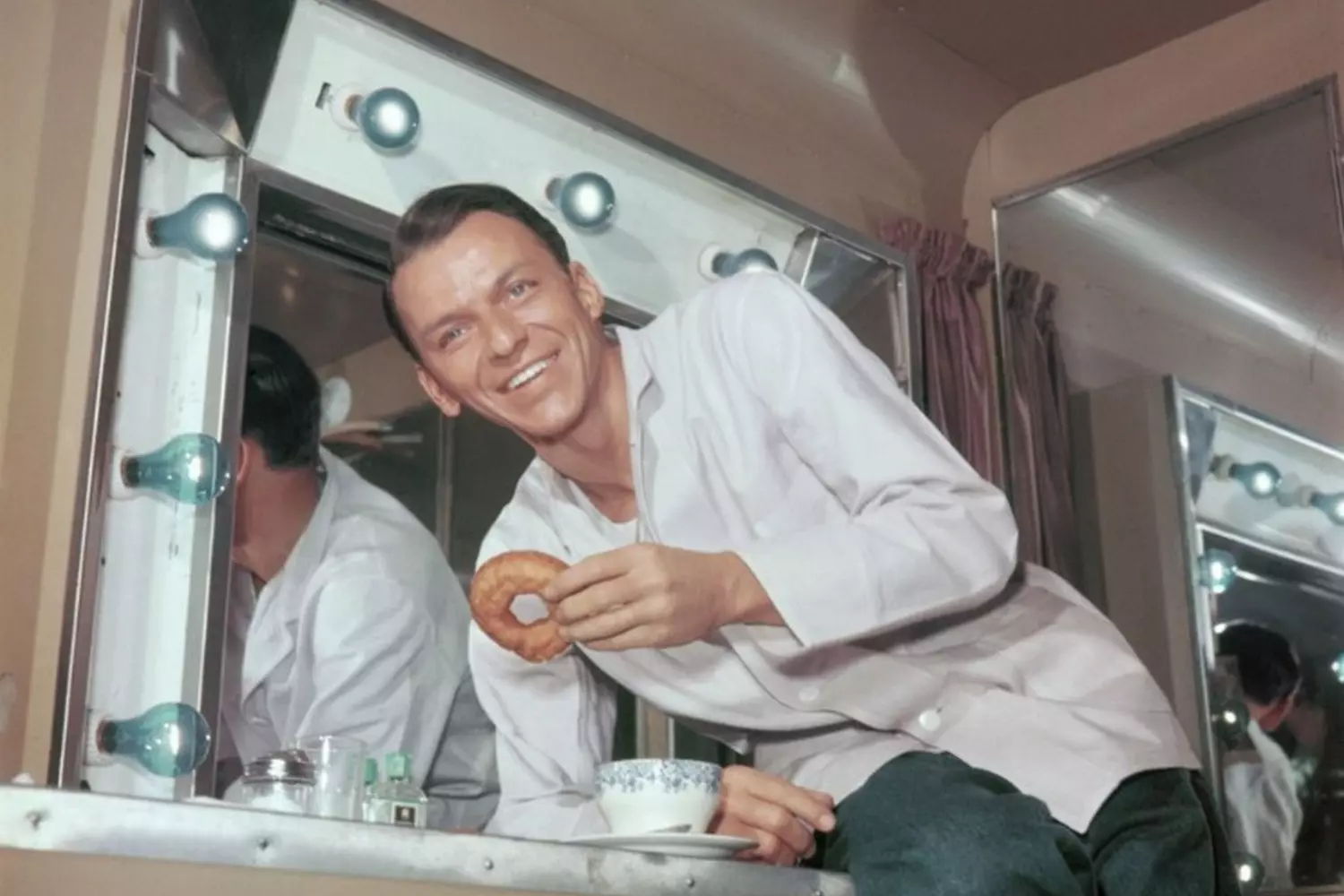
Frank Sinatra’s cultural impact from jazz to hip-hop
Frank Sinatra is not just the voice of an era but a true cultural phenomenon who has influenced the music and art of many generations. His work went far beyond classic jazz and pop music and continues to inspire artists across various genres — from classical to modern hip-hop.
- 01. Influence on Subsequent Generations of Musicians
- Rappers and Hip-Hop Artists
They often reference Sinatra in their lyrics and samples, emphasizing respect for his style and charisma. For example, Jay-Z and Nas have used fragments of his songs in their tracks, creating a bridge between jazz classics and street culture. - 21st Century Pop Stars
Artists like Lady Gaga and Michael Bublé openly acknowledge Sinatra’s influence on their music and stage presence. They draw inspiration from his masterful vocal control and emotional depth in performance. Even Sam Smith, a star of the contemporary soul and pop scene, notes that Sinatra showed how music can tell real, living stories full of feelings and experiences.
- 02. Timeless Albums
- Many of Sinatra’s albums, such as “In the Wee Small Hours” and “Songs for Swingin’ Lovers!”, continue to be reissued in new formats — from vinyl to digital platforms.
- These recordings not only maintain their popularity but also regularly appear on lists of the greatest music albums of all time, recognized by critics and fans worldwide.
- In the streaming era, Sinatra’s songs gather millions of plays, proving that his music remains relevant and in demand.
- 03. A Bridge Between Genres and Eras
- Frank Sinatra became a kind of link between the golden age of jazz and modern musical trends.
- His vocal technique and ability to work with an orchestra set a standard that artists across genres have developed — from classic soul to contemporary electronic music.
- Even in hip-hop — a genre seemingly far from jazz — you can hear Sinatra’s influence in rhythms, phrasing, and delivery style.
- 04. Cultural Icon and Inspiration
- Beyond music, Sinatra became a symbol of style, charisma, and confidence. His image — elegant yet approachable and human — has served as an example for many artists and fans.
- He demonstrated that a true artist is not only a voice but also a personality capable of telling stories and creating atmosphere.
- Thanks to this, Sinatra’s influence goes beyond music and permeates film, theater, fashion, and even literature.
Frank Sinatra is an eternal source of inspiration, helping artists of different generations find their voice and express their emotions through music. His legacy is a bridge between eras, cultures, and genres that remains alive today.
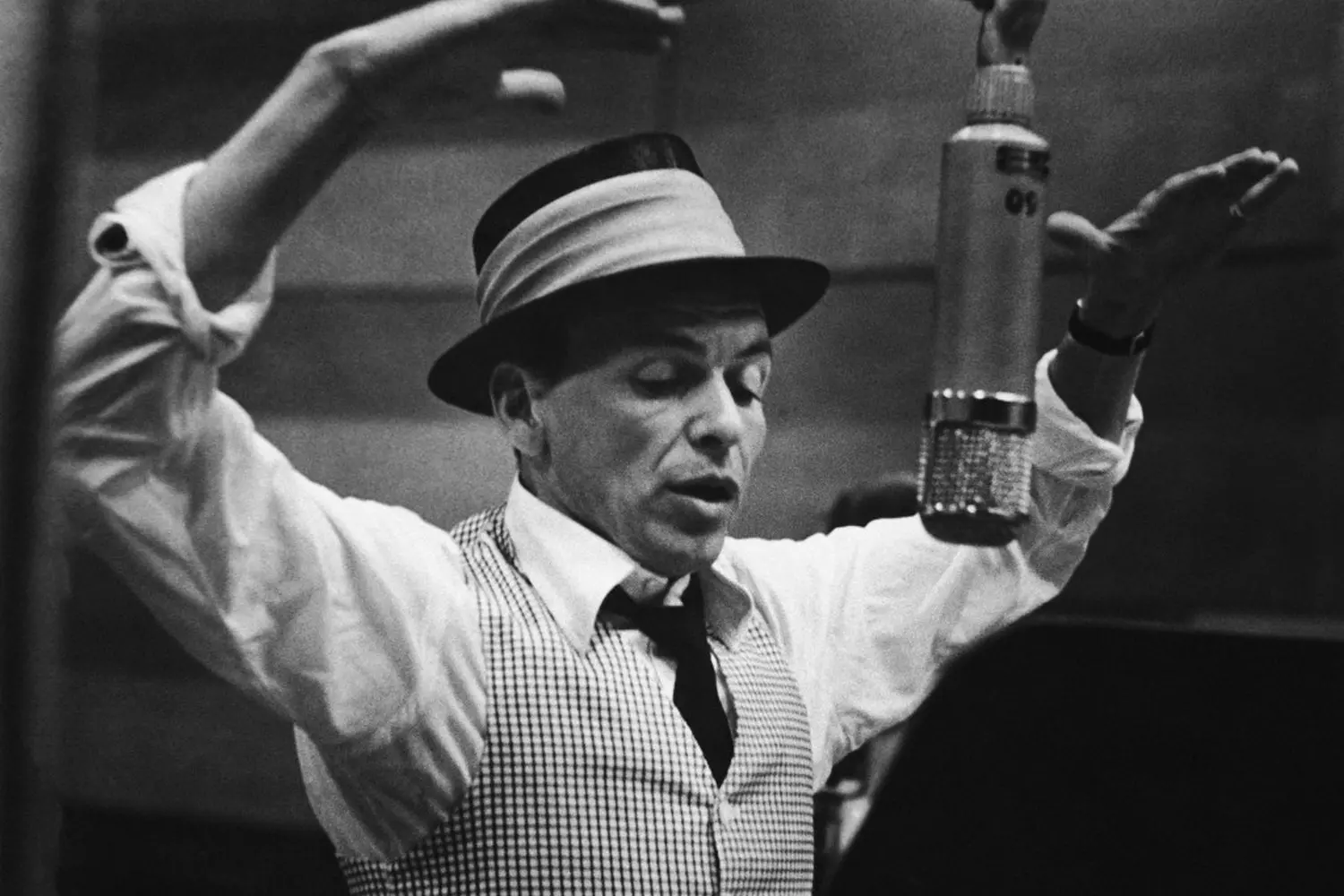
The twilight and legacy of Frank Sinatra’s last years
Old age comes to everyone, but not everyone leaves behind an entire era. Frank Sinatra knew that time was slipping away. He felt the stage slowly fading. But he left as he lived: on his own terms. Stylishly, quietly, with dignity.
- By the late 1970s, Frank’s health had begun to decline: hypertension, breathing problems, memory and vision issues.
- He suffered from heart problems — it ached both literally and figuratively.
- Despite this, he continued performing until 1995, although his voice had grown deeper and hoarser, and his movements became restrained.
Once, after a concert in Las Vegas, he told his assistant: “I’m not the same anymore. But if the audience wants, I’ll go on.”
His last public performance took place in February 1995 in Los Angeles, in honor of his 80th birthday. He didn’t sing — he just sat in a chair, listened, and smiled. The stage paid tribute to him. He was not just an artist — he was a symbol of the 20th century.
In his final years, Frank suffered from dementia and memory lapses. He was rarely seen in public, increasingly staying at home in Beverly Hills with his wife Barbara. Television, newspapers, fans — all faded into the background. What remained was family, silence, and old recordings.
May 14, 1998: the day the voice went silent
On this day, Frank Sinatra was admitted to Cedars-Sinai Medical Center with a heart attack. The last words he spoke to his wife Barbara were: “I’m losing my breath.” That same evening, he passed away. He was 82 years old.
At his funeral in California, everyone was present — from politicians to Hollywood stars. He was laid to rest to the sounds of "Put Your Dreams Away" — the song he always ended his concerts with. His tombstone bears just three words: “The best is yet to come”.
After his death, the world did not fall silent. It spoke even louder:
- Sinatra’s albums continue to sell by the millions.
- His style inspires designers, artists, and directors.
- His quotes are cited by presidents, musicians, and teenagers alike.
- He became the archetype of the man of his era: bold, elegant, free.
Frank Sinatra was a man of paradoxes: within him coexisted a tender romantic and a hardened pragmatist. He could be tough and vulnerable, a loner and the life of the party. He was both a jester and the king of the stage. “My Way,” “Strangers in the Night,” “Fly Me to the Moon” — these are not just songs. They are a portrait of an era painted by his voice.
He left us in 1998. But he did not disappear. He remains in the evening jazz, in leather boots, in cigar smoke, in a glass of whiskey. He awaits us in every airport where “Come Fly With Me” plays, and in every bar where “New York, New York” sounds. He didn’t just live life. He sang it.

Experience the legacy of Frank Sinatra with American Butler
Frank Sinatra was not just a singer. He was a symbol. His voice — the voice of New York, Las Vegas, the jazz era, an era of hopes and disappointments.
Charismatic, passionate, eternally stylish. He is impossible to replicate, but impossible to forget.
Want to feel the atmosphere of 1960s Las Vegas, stroll through the streets of New York where the notes of “My Way” once played? With us, you can immerse yourself in the world where Frank Sinatra lived, sang, and shone.
We organize private retro tours: from legendary casinos and recording studios to Beverly Hills mansions and Vegas nightclubs.


























